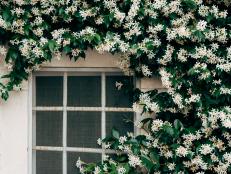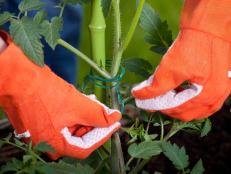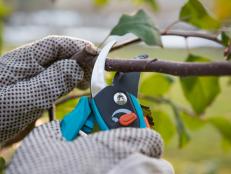How To Prune Clematis
Learn what you need to know to keep your clematis vine looking its best.

PerennialResource.com
Clematis vines are the queen of the climbers, gracing gardens with luxurious blooms that are big and beautiful. These pretty vines have a reputation of being tough to manage. They’re actually not hard to grow, although pruning routines can become a bit confusing. But pruning doesn’t have to leave you scratching your head. When you cut depends on when your clematis blooms.
Back in the 1950s, garden experts divided clematis vines into three groups based on flowering time, which in turn determines the pruning routine. If you pay attention to when your clematis blooms, you can easily figure out the group it’s in—or just look at the plant tag (if you’re buying a new vine). There are three flowering times and pruning groups: Group 1, Group 2, Group 3. Here’s what you need to know.
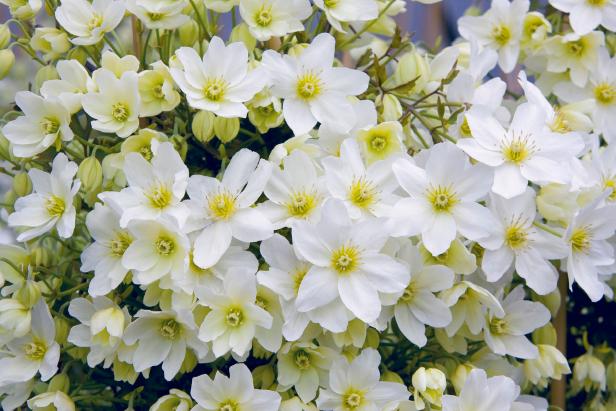
Monrovia.com
Group 1 (sometimes called Group A)
These clematis vines burst into bloom in spring—they’ll be the first clematis vines to flower in your region. This early flowering occurs on old wood—stems that were formed during last year’s growing season. The time to prune these clematis is after they flower. (If you cut them before they bloom, you’ll be snipping the flower buds and cutting short your floral show.)
How much you cut depends on your clematis. If it’s a vigorous vine that scales the garage walls and scrambles across the roof each summer (think Clematis armandii), then you should probably cut it back almost to the ground. For slow growing Clematis macropetala and C. alpina, you may not need to prune much at all. Snip wayward stems to keep the vine in bounds and call it done.
Examples of Group 1 clematis: Clematis alpina, Clematis montana, Clematis armandii, Avalanche Evergreen Clematis (shown above).
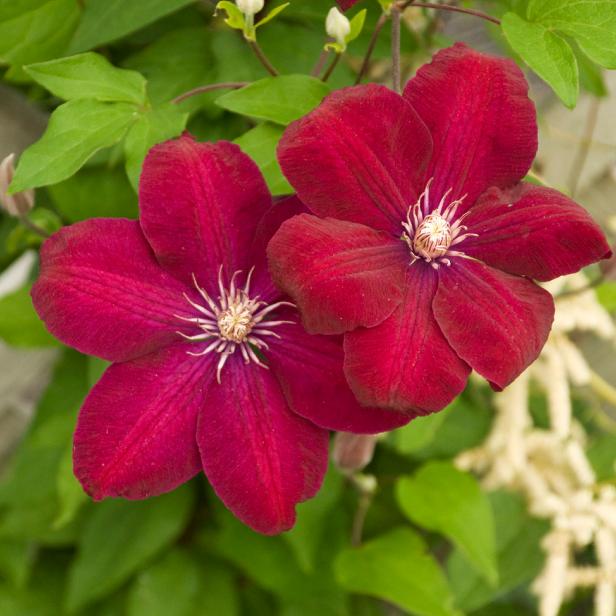
PerennialResource.com
Group 2 (sometimes called Group B)
Think of Group 2 plants as the mutants of the clematis world — flowering is their superpower. These clematis vines flower on both old and new stems and, as a result, stage two flower shows each year if vines are healthy. The first act unfolds in spring; the late-season show headlines in late summer or fall. Prune Group 2 clematis vines lightly in late winter or early spring. Grab the clippers when buds start to swell. Remove any weak or dead stems, and cut to reduce plant height — or not. The choice is yours.
Some clematis fans prune Group 2 vines in alternate years only, cutting plants back by half. No matter the method, you’ll still get flowers with this group — big blooms on last year's stems, smaller flowers on this year's stems. Examples of Group 2 clematis: ‘Henryi,’ ‘The President,’ ‘Rouge Cardinal’ (shown above), ‘Nelly Moser,’ and ‘Elsa Spath.’
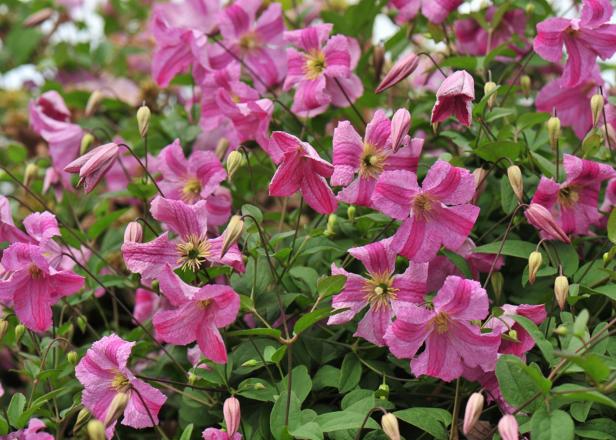
ProvenWinners.com
Group 3 (sometimes called Group C)
This group of clematis strut their stuff anytime from spring to late summer or even fall. Each flower that opens forms on new stems that grow during the current growing season. Pruning these clematis is simple. In early spring, when chances of frost have passed and buds are starting to swell, remove all stems, cutting just above a bud. Place your cuts so remaining stems are roughly 4 to 6 inches long.
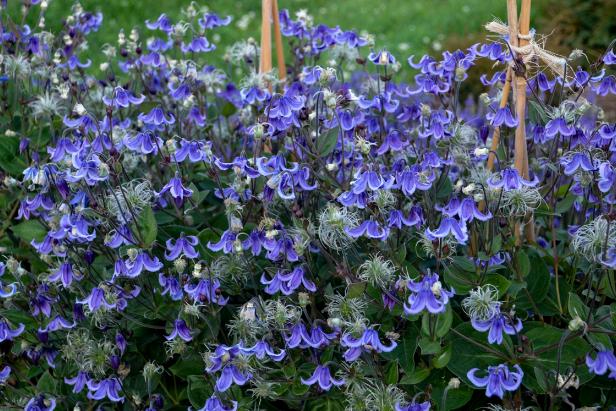
ProvenWinners.com
Many Group 3 clematis produce new stems each year from the crown, behaving like a perennial. This group includes what’s known as shrub or upright clematis. You can cut these types to ground level in late winter or early spring.
Examples of Group 3 clematis: ‘Jackmannii’ (shown top of page), Pink Mink (shown above), Clematis integrifolia, Clematis tangutica, ‘Ernest Markham,’ sweet autumn clematis, and ‘Stand By Me’ (blue, shown immediately above).








